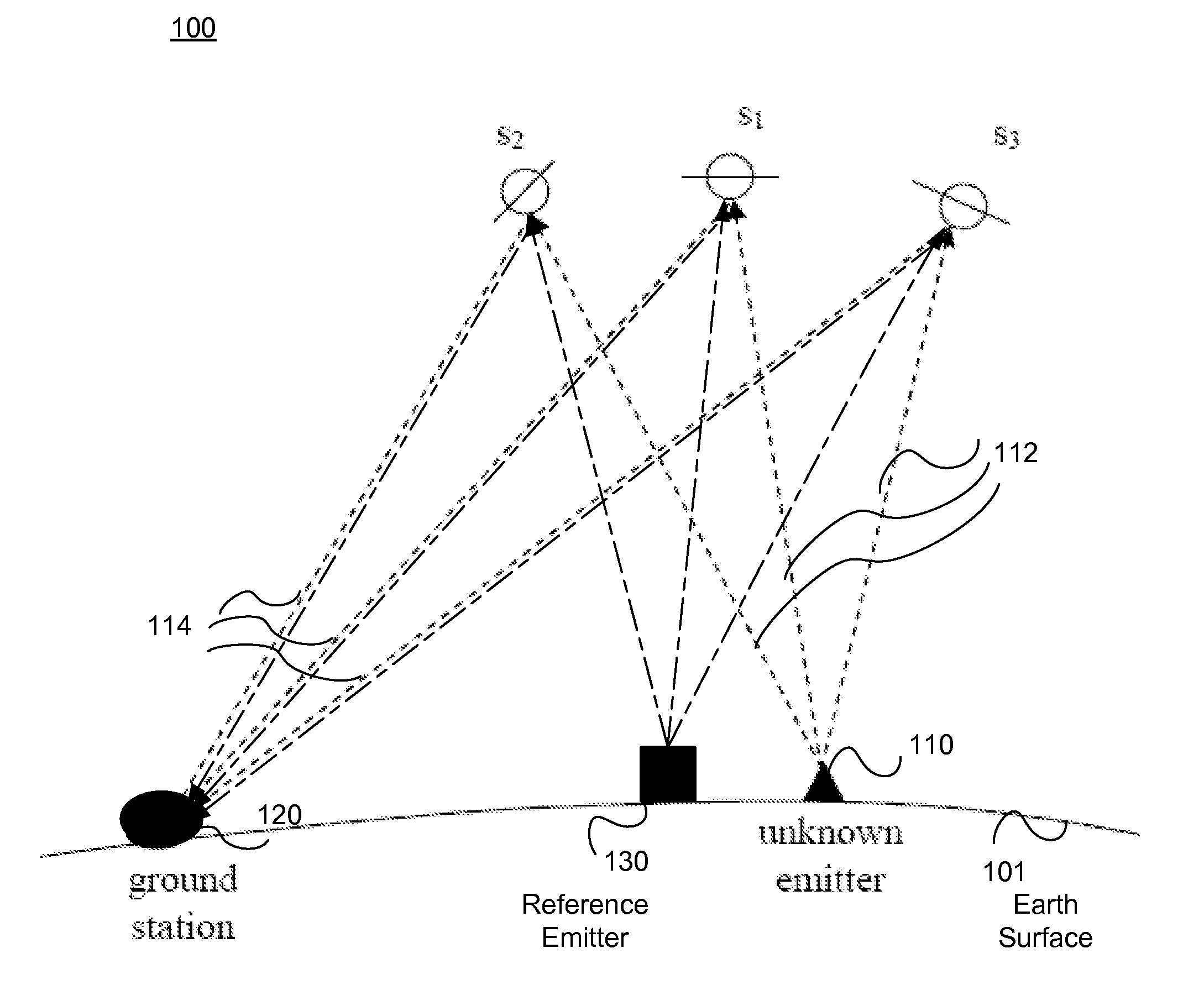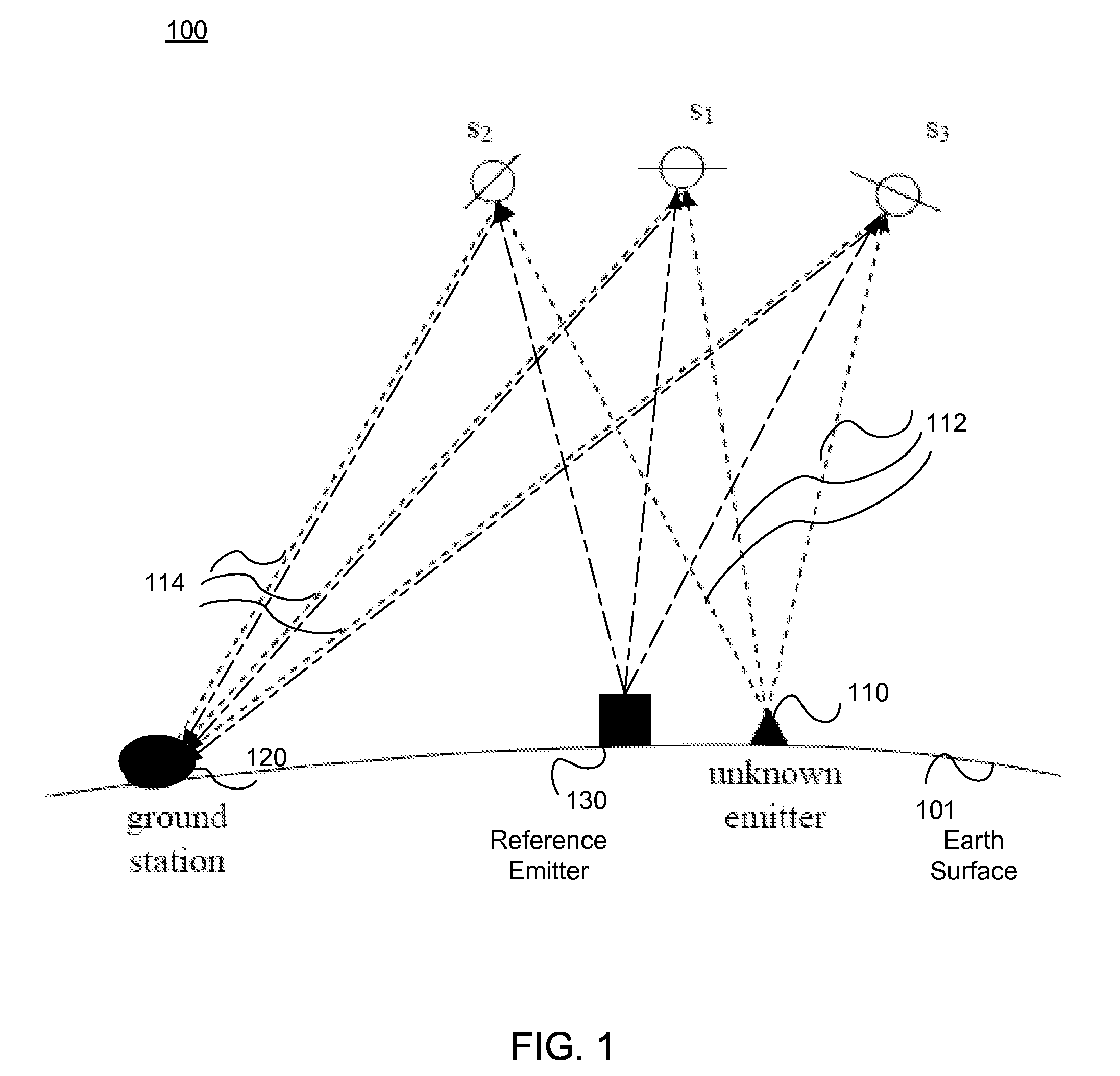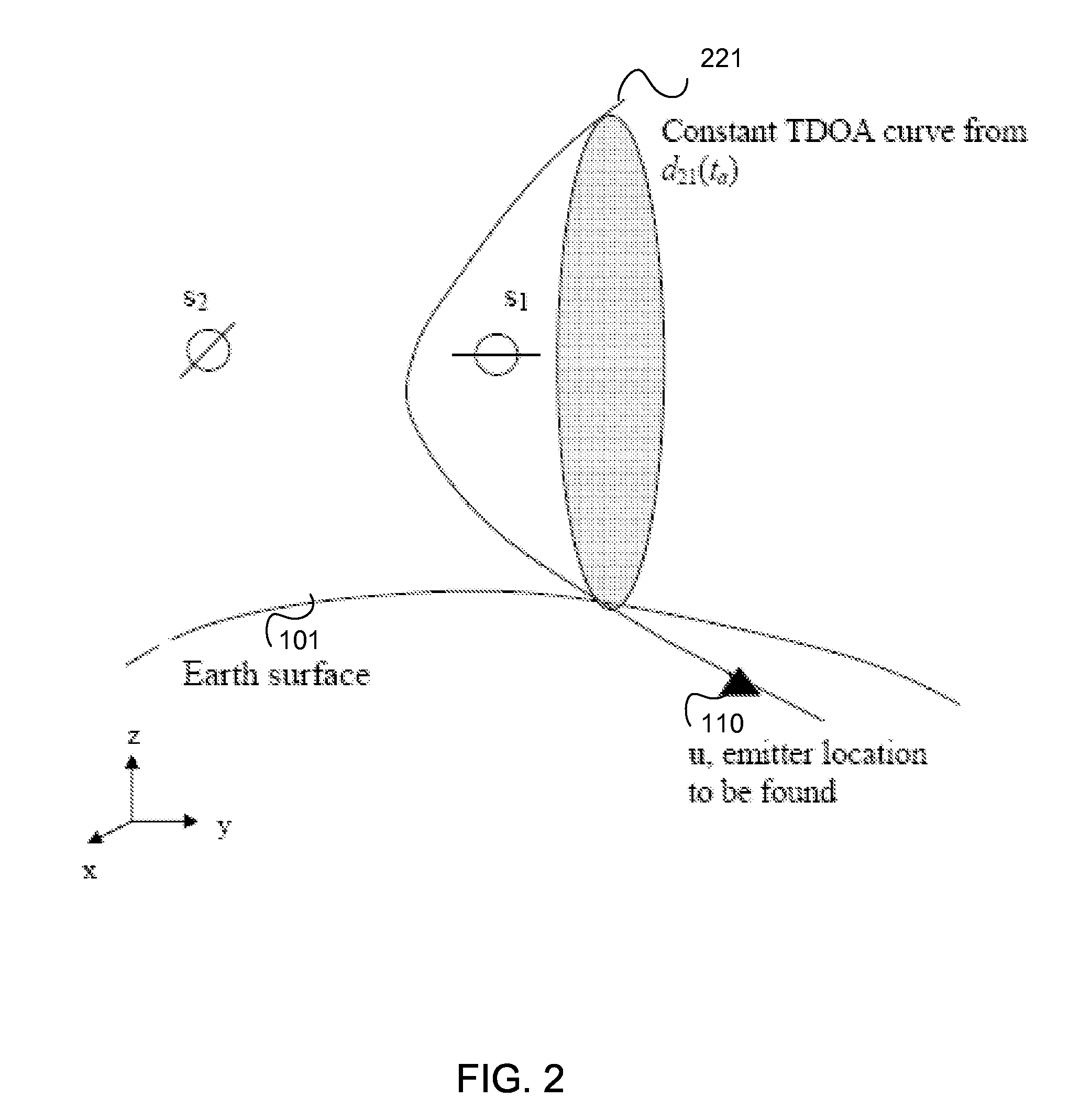Determining a Geolocation Solution of an Emitter on Earth Based on Weighted Least-Squares Estimation
a geolocation solution and weighted least-squares technology, applied in direction finders, instruments, measurement devices, etc., can solve problems such as inability to meet conditions in practice, not being able to obtain two measurements at the same time, and not being able to accurately estimate the location of the emitter
- Summary
- Abstract
- Description
- Claims
- Application Information
AI Technical Summary
Benefits of technology
Problems solved by technology
Method used
Image
Examples
Embodiment Construction
[0022]FIG. 1 illustrates the geolocation scenario 100 where an emitter 110 with an unknown location emits signals 112 that are received at an observer, referred to herein as a ground station 120, through three different satellites. As described above, the satellites s1, s2, and s3 have non-zero velocities with respect to the earth. The unknown emitter 110 sends out signal 112 and it is received by the satellites s1, s2, and s3. The satellites s1, s2, and s3 relay the signal 114 to a ground station 120.
[0023]The ground station 120 determines the time-difference of arrival (TDOA), denoted as d21, between the signal 112 from the emitter 110 through the primary satellite s1 to the ground station 120 and the signal 112 from the emitter 110 through another satellite s2 to the ground station 120. Similarly, the TDOA of the signal 112 from the emitter 110 through the first satellite s1 to the ground station 120 and the signal 112 from the emitter 110 through a third satellite s3 to the grou...
PUM
 Login to View More
Login to View More Abstract
Description
Claims
Application Information
 Login to View More
Login to View More - R&D
- Intellectual Property
- Life Sciences
- Materials
- Tech Scout
- Unparalleled Data Quality
- Higher Quality Content
- 60% Fewer Hallucinations
Browse by: Latest US Patents, China's latest patents, Technical Efficacy Thesaurus, Application Domain, Technology Topic, Popular Technical Reports.
© 2025 PatSnap. All rights reserved.Legal|Privacy policy|Modern Slavery Act Transparency Statement|Sitemap|About US| Contact US: help@patsnap.com



